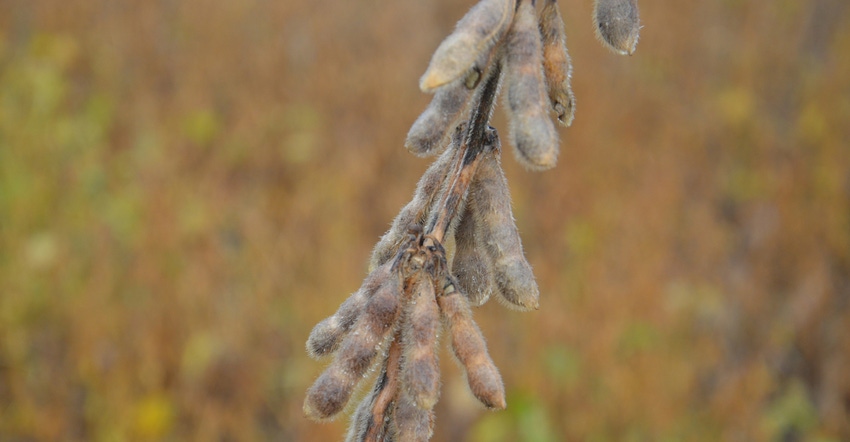August 4, 2022

Our crops consultant wants to scout soybeans again before harvest. Dad says why scout now?
The Indiana certified crop adviser panelists answering this question include Shaun Casteel, Purdue Extension soybean specialist, West Lafayette; Steve Gauck, regional agronomy manager for Beck’s, Greensburg; Andy Like, agronomist with the Evansville AgriSelect LLC, Vincennes; and Dan Ritter, central region agronomist for Dairyland Seed, based near Rensselaer.
Casteel: I’m a firm believer in scouting soybean fields early and often. I want to be in tune with what has been occurring and what is currently happening. August and September can make or break soybeans.
I like scouting now to anticipate yield potential with boots on the ground and eyes in the skies. Yield estimates for soybeans can be challenging, but it’s still good to understand how plants weathered the growing season by observing pod load throughout the canopy.
While you’re counting nodes and pods, you get a close-up view of any insect feeding such as bean leaf beetle scarring and stinkbug piercing. In most cases, you’re “done” with management decisions. However, a threshold could be met, requiring an application.
Soybeans do a great job expressing variations within a field and within the current growing season as seeds fill and leaves begin dropping. A simple bird’s-eye view can direct you to problematic areas, as some soybeans mature or drop their leaves faster due to stresses. A planned flight with a UAV allows you to have a “map” that documents variation in the field better than a yield map, and it’s still geo-tagged. That level of precision opens eyes to problematic areas that we can troubleshoot now for future solutions.
Gauck: The main concern now is insect feeding, especially stinkbugs. They feed on developing pods, cause disease and abort seeds. Damaged seeds cause storage challenges. Frogeye leaf spot can still cause concern if the weather has been favorable. Scouts can also focus on what worked this year and what could have been done differently. This will help set your management plan for next year.
Like: One of the most critical times to scout soybeans is right now! Issues that arise now directly impact yield. Potential problems include weed escapes, nutrient deficiencies, and disease and insects. Expect to pay a couple of bucks an acre for the scouting pass. However, if they find an issue of significance, value would far exceed cost. Remember, $2 per acre is a fraction of a bushel of soybeans. It will not take much to recoup scouting cost.
Ritter: How much is it worth? Scouting has value anytime because you never know what may be found. This late in the season, look for late-season insect pests and later-developing diseases. Action steps may be limited or none at all. A lot depends on growth stage and time to maturity. Information gathered may build a knowledge base for potential management in the future. It will come down to cost of scouting, peace of mind and possible planning for the future.
In late August and early September, soybeans are in the late R stages. For insects, watch for pod-feeders like bean leaf beetles and stinkbugs. Disease concerns start to diminish, especially given that time to actual maturity may be short. Still, take note of late-developing disease areas that could produce inoculum for future years.
You May Also Like




